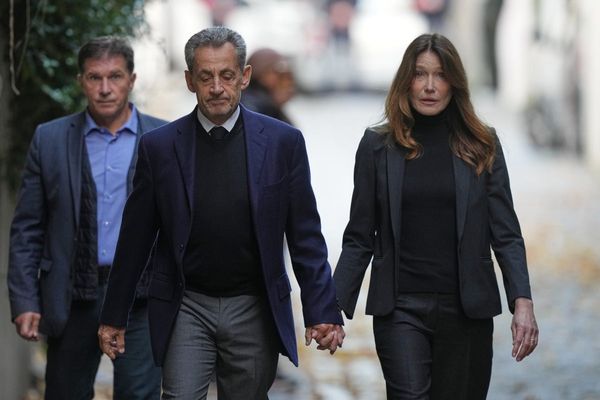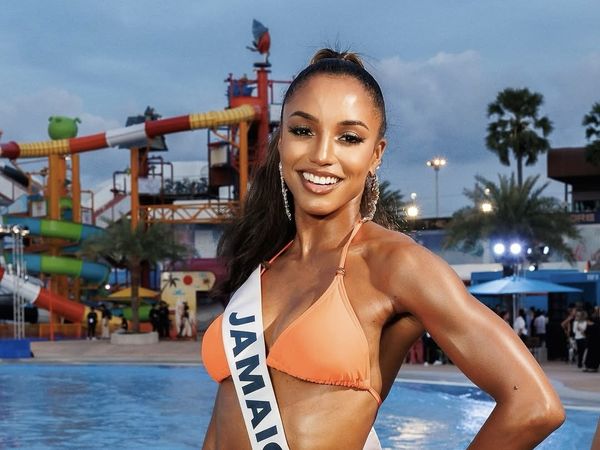
Forty-four years ago, Eddie Mabo stood in a lecture hall at James Cook University. He was usually on campus to work as a gardener, but that day he was explaining to the room how the land around the Torres Strait had been passed down, usually from father to son, for generations.
What was said in that lecture hall sparked four decades of native title claims across Australia – with more than 45% of the nation’s land now covered by some form of agreement.
Last week, the Wurundjeri Woi-wurrung people in Victoria lodged a native title claim for Melbourne and its surrounds. The premier, Jacinta Allan, heralded it as a “positive step” forward, and the 11 members making the claim have been quick to point out it won’t affect the rights of property owners in Melbourne.
But some rightwing commentators have likened it to “apartheid”, saying it will cause “racial division”.
How did native title start?
That day at James Cook University, Mabo explained how land ownership was hereditary, similar to the English tradition, and how the borders between different clans’ lands were known and respected.
“This system existed as long as we could remember,” Mabo told the room.
At the conference was a young lawyer, Greg McIntyre. Afterward, he, Mabo, and other lawyers discussed the possibility of a test case to claim land rights through the court system.
Sign up: AU Breaking News email
More than 10 years later, in 1992, the high court of Australia recognised that Mabo and other Murray Islanders had ownership of Mer (Murray Island) before colonisation, and recognised that right as native title. It overturned the doctrine of Terra nullius, the legal fiction that Australia was a “land belonging to no one” and was therefore free for the British to claim.
What exactly is it?
Native title is a legal recognition that Aboriginal and Torres Strait Islanders lived in Australia before colonisation, and have rights to use land under their traditional law and customs.
In practice, a grant of native title often gives traditional owners the right to use crown land to hunt and gather, or hold ceremonies. It can mean sharing responsibility for the country with a government organisation that manages national parks to eradicate weeds and run controlled burns. And it offers a right to be consulted on decisions regarding what happens to land.
What it does not do is grant a freehold title. It is non-transferrable. Land cannot be traded and, in many cases, not even built upon without further negotiation. It’s only available on crown land – any other title, other than a pastoral lease, extinguishes any potential for a claim. The Aboriginal activist Gary Foley has described native title as the weakest form of property right available under law, and “the greatest single act of dispossession since 1788”.
Native title rights are managed through a prescribed body corporate, which must be set up to negotiate with any other parties.
“There are 290-ish prescribed body corporates across the country, which covers about 45% of the land of Australia,” National Native Title Council CEO Jamie Lowe said.
How does the process work?
A successful claim requires traditional owners to prove an unbroken cultural connection to the land preceding colonisation, which Lowe says is a challenging process.
“Most communities that you talk to, that have embarked on a native title journey or claim, will tell you the hardship that entails – meeting after meeting, researching, revisiting some trauma within that process,” he said.
“With no real guaranteed outcome, because the burden of proof is on you to prove that you are the right people for that particular area and that connection hasn’t been broken.”
One of the earliest native title cases was brought by the Yorta Yorta people in Victoria, who filed a claim over land and waters covering 2,000 sq km along and around the Murray and Goulburn Rivers. In 2002, the high court dismissed the appeal.
“And there was an infamous line from the judge,” Lowe said. “He said, ‘Well, the tides of history have washed away your native title rights.”
“It’s basically saying, the acts of the past, the invasion, colonisation, whichever way you want to frame it, has removed you from the country.”
What about in cities?
There has only been one native title determination over a major city, after the Kaurna people were recognised custodial holders over Adelaide in 2018.
Chairperson of the Kaurna Yerta Aboriginal Corporation Mitzi Nam said it was “bittersweet” holding a native title claim over a metropolitan area “where everything’s already been built upon, everything’s been taken away.
“The language was taken away a very long time ago, and it was only through German missionaries before white European occupation here, that recorded our language that we were able to start to relearn and re-teach it.”
The claim means they are on boards of different organisations and foster relationships with state and federal government departments to protect culturally significant sites and educate the wider community.
She said a lot of the work was about mitigating the ongoing effects of colonisation. In 2023, a burial ground was found at the site of a multimillion housing development, triggering consultation with the Kaurna native title holders.
“We’ve sort of got our hands tied a bit, so the development is going ahead,” she said. “But there’s been a block of land within that development put aside for a safe resting place where a few of the ancestral remains are still in the ground,” she said.
“And those that have been removed will come back to that area.”
Another site in the north of Adelaide that is part of LIV Golf, was deemed a “protected” area in October, as it was the area of the first school and mission site for Kaurna people. The acknowledgment meant the site will not be tampered with during the development, Nam said.
“We’re making sure that what’s happening on our land is culturally appropriate, that you know you’re actually trying to avoid or mitigate any damage or destruction to our cultural heritage.”
A Noongar claim over Perth is often referred to as the second, but Greg McIntyre says that claim “is a rather different situation”.
The Noongar made their claim under the Native Title Act and were successful before the federal court decision was appealed. At that point, the then WA premier Colin Barnett stepped in and offered a settlement, if the groups gave up any future claim to the area.
The Noongar people are recognised as traditional owners through legislation, but it’s technically “an offshoot” of native title, although the rights are similar.
“It’s an agreement of recognition of the existence of Noongar people as traditional owners,” McIntyre said. “But the lands which they have access to are national parks and conservation states as co-management, some areas of crown land, and some significant amounts of money [which] is held in a trust.”
The decision to allow native title to be extinguished to reach a settlement – called an Indigenous land use agreement – was not agreed to by all Noongar traditional owners. It was unsuccessfully challenged all the way to the high court, and in December 2019, a group of Noongar traditional owners went on to lodge a $290bn compensation claim for spiritual damages caused by the extinguishment of native title.
Among Perth’s non-Indigenous citizens, McIntyre said, “it hasn’t ultimately been terribly controversial. Because it hasn’t directly impacted any non Indigenous titles. It hasn’t taken people’s back yards, which is often the catch cry,” he said.
In 2010, the Brumby government established the Traditional Owner Settlement Act, a Victoria-based land rights regime which, The Age reports, traditional owners do not believe is working.
Lowe said while there was “conjecture” over the best way to recognise traditional owners, native title through the court system was often preferred because “no one can take it away”.
“As arduous and as painful as it may be, you get your rights recognised, and no one can actually take that away.”
What will it mean in Melbourne?
If the claim is successful and native title is granted, it would recognise the Wurundjeri Woi-wurrung’s rights to access, use, and protect crown land in line with their laws and customs, along with the right to be consulted. It does not affect private homes, businesses or public infrastructure.
They are hoping to negotiate the transfer of management, or involvement in the administration, of some parks and conservation areas within the claim area. These could include parts of the Dandenong Ranges, Bunyip state park, Wombat state forest and Lerderderg state park.
McIntyre said if the Wurundjeri Woi-wurrung people were not successful in their native title claim, they could launch a claim for compensation, which other groups have done for activities that have damaged their ability to apply for native title. But compensation only covers acts after 1975 – and Melbourne was settled in 1835.
The native title process “usually takes several years,” McIntyre said. “Some of them decades.”







